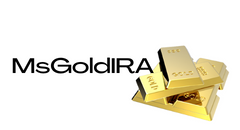
Donor-Advised Fund Explained
A donor-advised fund (DAF) serves as a versatile charitable giving tool enabling you to contribute to a charity, obtain an immediate tax deduction, and suggest grants from the fund over time. Picture it as a strategic resting spot, like a "lily pad," for your charitable assets before they reach their final destination.
The Concept: Bitcoin Donation Leaps
Imagine you bought bitcoin for $5,000, and its value now stands at $70,000, indicating a gain of $65,000. By donating this appreciated bitcoin to a DAF, you can sidestep capital gains taxes on the appreciation. Here’s how it works:
1. Initiating the Donation: Securing the Deduction
Your bitcoin, symbolized by the frog, jumps from your personal holdings onto the DAF, the lily pad. This leap permits you to claim a charitable tax deduction for the full fair market value of the bitcoin at the donation time, which in this case is $70,000.
2. Waiting for Distribution: Strategic Choices
While your bitcoin remains on the lily pad, you have the freedom to adjust your charitable strategy. You can retain the bitcoin, convert some or all of it into cash, or diversify into different investments. This period on the lily pad is vital for aligning your giving approach with your financial objectives.
3. Donating to Charity: Making a Difference
Eventually, the frog completes its leap to the other side of the stream, representing your chosen charities. These organizations could include hospitals, schools, religious groups, and even bitcoin development non-profits. With a DAF, the recipient charities can receive assets or cash, simplifying their operations without needing to establish new bitcoin infrastructure to accept gifts originating as bitcoin.

Practical Applications
Donor-advised funds have various practical applications:
Simplified Donations
Charities can receive cash donations, streamlining fund management without the complexities of holding and converting bitcoin. Donors benefit from tax advantages when gifting appreciated bitcoin and can decide how long the bitcoin remains before final conversion and grant.
Crypto Portfolio Optimization
DAFs assist donors with diverse crypto portfolios by accepting alternative coins like Ethereum. Donors can gift these coins to the DAF, sell them tax-free, and reinvest the proceeds into bitcoin or other assets, aligning with their investment and charitable objectives.
Strategic Tax Management
Utilizing a DAF in conjunction with other tax strategies like Roth conversions or business sales can amplify the tax efficiency of a donor's financial plan. This approach allows donors to time significant write-offs to offset other income and front-load their charitable giving.
Gift and Replace Strategy
The "gift and replace" concept involves gifting appreciated bitcoin, repurchasing it, and resetting the cost basis to the current market value. This approach can potentially reduce future capital gains taxes and enhance financial well-being compared to giving cash.
Innovative Approaches: On-Chain DAFs
Sound Advisory, UI Charitable Advisors, and Unchained have introduced the groundbreaking on-chain donor-advised fund (DAF). This innovative solution utilizes a multisignature setup to secure bitcoin on-chain, ensuring unmatched security and transparency. In this 2-of-3 multisig setup, the client, University Impact, and Unchained each hold a key, allowing clients to verify the security of their bitcoin on-chain before distribution to their chosen causes.

Conclusion
The analogy of the bitcoin frog leaping across the DAF lily pad to reach the charitable destination highlights the strategic advantages of channeling bitcoin through a donor-advised fund. From the initial leap for a tax deduction to the planning phase on the lily pad and the impactful donation to chosen charities, the process aims to maximize both charitable impact and financial benefits. By integrating bitcoin into your charitable giving strategy, you can make a substantial impact while enjoying significant tax advantages. Take the leap, let your bitcoin hop onto the lily pad, and witness it transform into a force for good. Fix the money. Fix the world. Hop to it!
Frequently Asked Questions
What precious metals may I allow in my IRA?
The most commonly used precious metal in IRA accounts is, of course, gold. As investments, you can also buy bars and bullion coins made of gold.
Precious metals can be considered safe investments as they don't lose their value over time. They're also considered a great way to diversify an investment portfolio.
Precious metals are silver, palladium, and platinum. These three metals are similar in their properties. However, each one has its unique uses.
For instance, platinum can be used in jewelry manufacturing. Palladium is used to create catalysts. The production of coins is done with silver.
Think about how much you can afford to purchase your gold, before you make a decision on the precious metal. You may be better buying gold that is less expensive per ounce.
You need to decide if you want your investment to remain private. If you are unsure, palladium is the right choice.
Palladium is more valuable than gold. However, it is also rarer. It is likely you will need to pay more.
Storage fees are another important consideration when choosing between silver and gold. The weight of gold is what you store. You will pay more if you store larger amounts.
Silver is best stored in volumes. You'll be charged less for smaller amounts.
If you decide to store your precious metals in an IRA, follow all IRS rules regarding gold and silver. You must keep track of all transactions and report them to the IRS.
What is a Precious Metal IRA?
Precious metals can be a good investment for retirement accounts. Precious metals have been around since Biblical times and still hold their value today. It is a great way of diversifying your portfolio and protecting against inflation by investing in precious metals like gold, silver, or platinum.
Certain countries permit citizens to hold their money in foreign currencies. You can buy gold bars in Canada, and then keep them at the home. Then, when you go back to visit family, you can sell those same gold bars for Canadian dollars.
This is a very easy way to invest in precious metals. It is particularly useful for those who live outside North America.
Do You Need to Open a Precious Metal IRA
This depends on what your investment goal is and how risk-tolerant you are.
Register now if you want to save money for retirement.
The reason is that precious metals are likely to appreciate over time. You can also diversify your portfolio with them.
The prices of silver and gold tend to be linked. This makes them better choices when you want to invest in both assets.
You shouldn't invest precious metal IRAs if you don't plan on retiring or aren't willing to take risks.
Statistics
- SEP-IRA”Simplified employee pension” For self-employed people like independent contractors, freelancers, and small-business ownersSame tax rules as traditional IRASEP IRA contributions in 2022 are limited to 25% of compensation or $66,000, whichever is less4. (sltrib.com)
- You can only purchase gold bars of at least 99.5% purity. (forbes.com)
- The maximum yearly contribution to an individual's IRAs is currently $6,000 ($7,000 for those 50 years or older), or 100% of earned income, whichever is less. (monex.com)
- To qualify as IRA allowable precious metals and be accepted by STRATA, the following minimum fineness requirements must be met: Gold must be 99.5% pure, silver must be 99.9% pure, and platinum and palladium must both be 99.95% pure. (stratatrust.com)
External Links
regalassets.com
takemetothesite.com
forbes.com
- Gold IRA: Add Some Sparkle To Your Retirement Nest Egg
- Understanding China's Evergrande Crisis – Forbes Advisor
kitco.com
How To
How to open a Precious Metal IRA
Precious and precious metals are one the most sought-after investment vehicles. They offer investors higher returns than traditional investments, such as bonds and stocks. This is why they are so popular. It is worth your time to research and plan before you invest in precious metals. Here are the basics to help you open your precious metal IRA account.
There are two main types for precious metal accounts: paper gold and Silver certificates (GSCs), and physical precious Metals accounts. Each type comes with its own set of advantages and disadvantages. GSCs and physical precious metals accounts can offer diversification, but they are difficult to trade and easy to access. Keep reading to find out more about these options.
Physical precious metals accounts include bullion, bars and coins. Although this option can provide diversification benefits, there are some drawbacks. The costs involved in buying, storing and selling precious metals can be quite high. Their large size makes it difficult to transport them between locations.
Paper gold and silver certificates, on the other hand are very affordable. They are also easily available and can be traded online. They are ideal for those who don't wish to invest in precious metals. But, they're not as well-diversified as physical counterparts. They are also backed by government agencies like the U.S. Mint so their value could decline if inflation rates rise.
You should choose the account that best suits your financial needs before you open a precious-metal IRA. These are some factors to consider before you do this:
- Your tolerance level
- Your preferred asset allocation strategy
- How much time will you invest?
- You can decide whether or not to use the funds for trading purposes.
- What tax treatment do you prefer?
- What precious metal(s), would you like to invest?
- How liquid can your portfolio have to be
- Your retirement age
- Where will you store your precious metals?
- Your income level
- Your current savings rate
- Your future goals
- Your net worth
- Special circumstances that may influence your decision
- Your overall financial situation
- Your preference between physical or paper assets
- Your willingness to take on risks
- Your ability and willingness to accept losses
- Your budget constraints
- Your desire to be financially independent
- Your investment experience
- Your familiarity in precious metals
- Your knowledge of precious metals
- Your confidence in the economy
- Your personal preferences
After you have determined the type of precious metal IRA that best suits you, you can open an account with a reputable dealer. These companies can also be found online, through word-of mouth or referrals.
Once you have opened your precious-metal IRA, it is time to decide how much you want to deposit. Every precious metal IRA account will have a different minimum initial deposit amount. Some accounts require $100 while others allow you to invest up $50,000.
The amount you invest in your precious-metal IRA is entirely up to you, as stated above. You should choose a higher initial deposit if you want to build wealth over time. However, a smaller initial deposit might work for you if your goal is to invest less money each month.
You have many options when it comes to the type of investments you can make. These are the most popular:
- Bullion bars, rounds and coins in gold – Gold
- Silver – Rounds & coins
- Platinum – Coins
- Palladium Round and Bar Forms
- Mercury – Round and bar forms
—————————————————————————————————————————————————————————————-
By: Jessy Gilger
Title: The Leap of Generosity: Exploring Bitcoin Donor-Advised Funds
Sourced From: bitcoinmagazine.com/markets/the-leap-of-generosity-hopping-into-bitcoin-donor-advised-funds
Published Date: Wed, 07 Aug 2024 13:50:03 GMT















